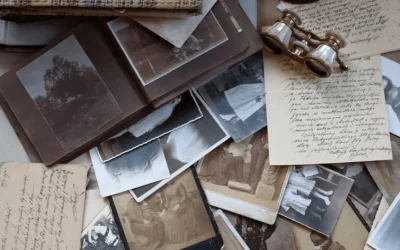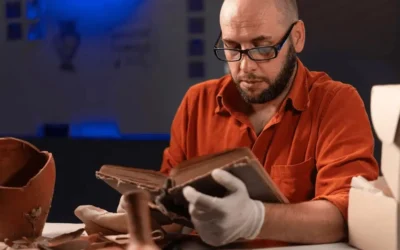Fundamentals of the Appraisal Process in Archives
Margot Note
Archivists gather information about the collections they steward as the first step of appraisal.
They study the records creators because they need to learn as much as possible about the administrative history, structure, and functions of an organization or an individual’s life and activities. If the archivists have a good lead file, they already have some of that information in place.
Archivists next decide on the levels of appraisal. Appraisal can occur at several levels, from the collection to a series within a collection, but rarely at the item level. Often, appraisal exists at the folder- or box-level of collections.
Documentation is Key
Archivists document the appraisal process. The archives should be able to review the recommendations for accountability reasons. Archivists may be reluctant to write down what they have gotten rid of, but the process should be transparent. The information in the appraisal report, which should be written and kept in the files, is useful for further processing.
Sometimes, with institutions, an office survey is useful to go beyond the level of a specific collection or record group. This activity is part of records management and can be important if the repository deals with the records of an ongoing, active organization to set up communication channels for future negotiations.
Archivists should reappraise when necessary. Reappraisal is an essential part of the appraisal process because appraisal is based on judgment—and historical perspectives and institutional priorities change. Often materials were acquired when space was not at as much of a premium, or standards were different, or appraisal did not occur at all.
A Process of Questioning
The first step is to gather information about the collection. First, archivists look at the volume of material, represented in linear or cubic feet. They also assess dates, both the span of dates and bulk dates. For example, if a collection has a few nineteenth-century items and most material after World War II, a range of 1820 to 1960 can be confusing for researchers without the inclusion of bulk dates.
Archivists review the condition of the materials. They look for signs of mold, insects, and poor storage and note problems and exceptions. If the archivist saw the collection in situ and packed it before it was transferred to the archival repository, he or she will have a better understanding of the collection’s condition.
They look at the physical types of materials, examining formats, anything noteworthy, or items that require special handling or storage.
Archivists also think about arrangement. Is there an existing order that can be discerned? Any order at all?
What is the administrative origin of the collection? Can archivists identify the organization, people, family that created the records?
Archivists seek key correspondents. They look for both frequent correspondents and anyone noteworthy, which can be highlighted later in the collection’s description.
Are unusual materials included? Based on the knowledge of donors and records creators, is the content expected in this collection? They highlight anything out of the ordinary.
They think about the potential uses of information. Archivists can sometimes extrapolate based on the records analysis and on-site discussion with donors or records personnel.
What is the frequency and nature of the current use of the records? This question comes into play with organizational records and connects to records management issues. Frequently used files may not be ready to enter the archives, but records often used are often more likely to have value.
Archivists consider the relationship to other records. How does this material fit with existing collections?
Advanced Appraisal
As archivists become more comfortable with the appraisal process, they can further explore basic archival theory’s interrelationship with appraisal theory. They can consider how they think about archives’ purpose and how this purpose intersects with how they feel about selecting records. They consider archival ethics applied to collection development and donor relations. They may also consider methods related to reappraisal and deaccessioning in their institutions and articulating these practices in related policies and procedures. Most importantly, they can hone their ability to apply appraisal theory and methods to increasingly large collections of materials.
Margot Note
Margot Note, archivist, consultant, and author is a regular blogger and popular webinar presenter for Lucidea, provider of ArchivEra, archival collections management software for today’s challenges and tomorrow’s opportunities. Read more of Margot’s posts here.
Similar Posts
Texas Archive of the Moving Image: Interview with the Digital Archivist
I recently interviewed Grace Muñoz about her work at the Texas Archive of the Moving Image. Her work on improving the discoverability of the multimedia collection is fascinating.
How to Conduct Comprehensive Archival Surveys
Conducting a comprehensive archival survey is critical to successfully managing archival collections.
Remembering History, Moving Forward Together, with ArchivEra
The Catholic Diocese of Arlington’s Director of Archives selected ArchivEra to manage their collections of historical and cultural significance, and strike a balance between security and access.
Unveiling Archival Impact
The transformative power of storytelling depends upon the strategic choices that top archival performers make and the shift from being record-keepers to change agents.




Leave a Comment
Comments are reviewed and must adhere to our comments policy.
0 Comments